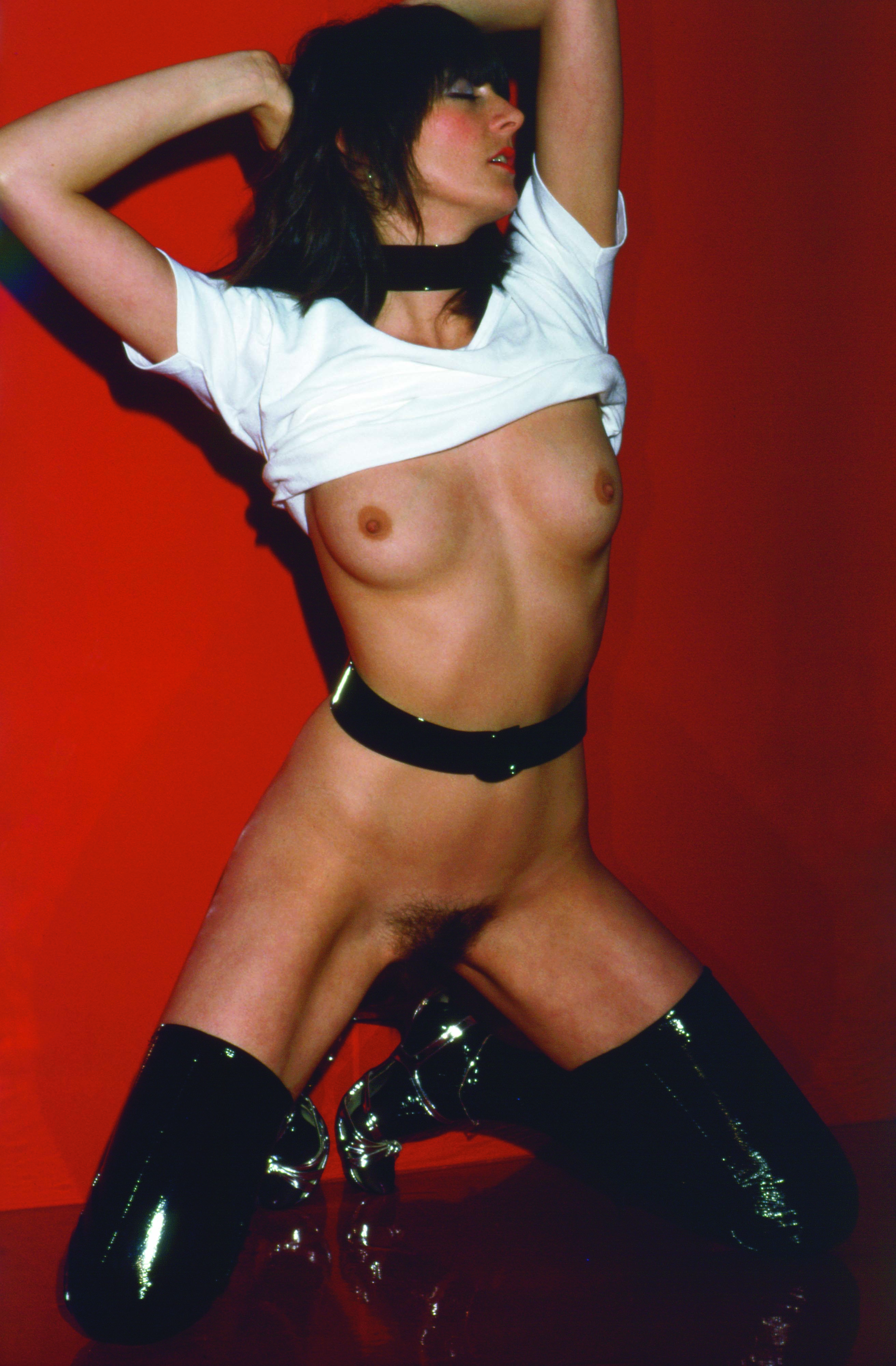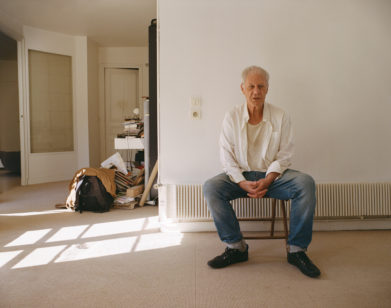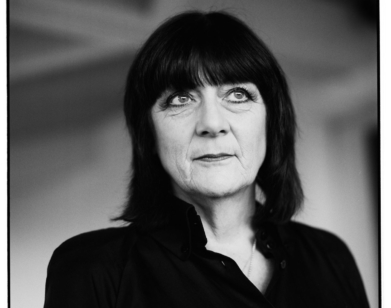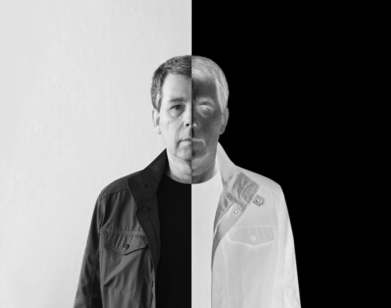Artist Cosey Fanni Tutti is helping mainstream art embrace sex
In 1976 the British artist, musician and founding member of music and visual arts group Throbbing Gristle, Cosey Fanni Tutti, put on the exhibition Prostitution at London’s Institute of Contemporary Arts, alongside the avant-garde performance art collective that she was then part of—COUM Transmissions—consisting of the musicians and artists Genesis P-Orridge and Chris Carter. It was a retrospective, shown at a time when the band were at the peak of their controversy. On show was the art that had made the group infamous: the explicit pornographic performances―often involving blood and urine, used tampons of Cosey’s and the pornographic images Cosey re-purposed, through which she strived to reclaim the pervasive male pornographic view of the 1970s.
Within days, the show had caused one of the biggest stirs the British art world had seen in decades, with newspapers campaigning for the work on show to be immediately taken down, and the house of commons debating it’s safety. To date, Prostitution is still one of the most controversial exhibitions the ICA has ever held.
Like many of her radical feminist contemporaries who used pornography in their work—people such as Kathy Acker, Birgit Jürgenssen and Renate Berlman—the following decades saw Cosey regularly sidelined in art history. But like Acker, Jürgenssen and Bertlemann, at 65 years-old, the artist and musician is cresting a new wave of fame. Earlier this year, her autobiography Art Sex Music lifted the lid on two of British art’s most controversial collectives Throbbing Gristle and COUM Transmissions, both of which she was in with singer, artist and self-proclaimed occultist Genesis P. Orridge. “He took liberties,” she now says of the artist. In her memoirs, Cosey talks openly about the snobbishness she received from the art world for using sex in her work in the ’70s. But this year, she became an authority on the topic, with Frieze Fair London asking Cosey to talk on a panel about the censorship of women artists who explicitly used sex in their work.
GRACE BANKS: In your memoirs Art Sex Music you really shed light on your part in COUM Transmissions and Throbbing Gristle. A lot of people thought of you as a pornographic model. But that modelling you were doing was so important to the artwork COUM Transmissions and Throbbing Gristle are famous for now.
COSEY FANNI TUTTI: I never saw the modelling and my art as separate things. Both aspects influenced the other. I started off modeling for pornographic magazines and that experience fed into my artwork. There’s no difference between pornography and art in my work, one informs the other.
BANKS: You were very controversial at the time you were exhibiting in the 1970s. I’m thinking particularly of the ICA Prostitution retrospectives where you put your old tampons on show. People walked out outraged, boycotted and tried to have the exhibition shut down. Were you surprised by the reactions you got?
TUTTI: I was astounded and shocked that people cared about the content. The tampons were just another part of me, I’ve always felt that. And the pornography on show, well I reclaimed that male fantasy and presented it from a woman’s view. But people thought it was obscene. Although, in the 1970s in the UK, if you were shocking people you were doing something right.
BANKS: Do you think that level of controversy helped COUM Transmissions gain traction and become as big as you did?
TUTTI: It gave us a name. But really, I didn’t even view what I was doing as a career until recently. I was ambitious but I didn’t see myself as an artist at all and my trajectory wasn’t planned. Since I’d been living with Gen [Genesis P-Oriddge] in a commune in Hull in the early 1970s, we’d be doing the group performance shows. The ones that involved masterbation and some BDSM. So it wasn’t like suddenly we were trying to be controversial. It’s just what we’d always done.
BANKS: You were stripping in men’s worker clubs in London until the 1980s. In your memoir you wrote about those experiences as crucial to your art.
TUTTI: They were. I wanted to immerse myself in the porn scene. The real porn scenes of London at the time, which included men’s clubs and pubs all over the city.
BANKS: I love that picture of you stripping at the Westminster Arms in 1979.
TUTTI: [laughs] Yeah it was one of the men at the club, a punter, taking that photo. I think it might have actually been my birthday.
BANKS: At the time you were attacked by feminists—like the women behind the feminist magazine Spare Rib—for stripping. How did that feel?
TUTTI: I was criticized a lot. But I didn’t feel that I could identify with feminism at the time. I didn’t feel that it was an inclusive movement that I could be part of.
BANKS: Your current exhibition on at Cabinet Gallery in Vauxhall, London, features your work Piccadilly International. Vol 10 No. 10 1976-2005, mixed media images of framed pornographic pictures. How does it feel to exhibit pornographic work now that you’re respected rather than critiqued?
TUTTI: Well there’s still a lot of criticism for using pornography in art. A lot.
BANKS: There’s also a snobbishness in the art world about what is ‘porn’ and what is ‘art’ when a woman self-objectifies the naked body.
TUTTI: Yes, there very much is. And overall there’s a tendency to dismiss porn and knock it down because it’s available in the shops and people regard it as lowbrow. But as soon as you see something in the context of an art gallery it’s viewed as legitimate, even if it’s exactly the same image as in the top shelf magazine.
BANKS: I recently wrote a book about women artists who riff on sex work in their art. And a lot of these women said they’re still censored just as much as the women artists like yourself and others like Hannah Wilke and Lynda Benglis were in the 1970s. Do you still feel the impact of censorship for women in contemporary art?
TUTTI: That’s interesting. Yes, nothing much has changed. We see it on Instagram where women have pictures of themselves topless banned. It’s just the same as what happened to me. Whenever a woman presents her own body naked, there will always be people who want to censor those images. Empowered women are still viewed as dangerous.
BANKS: Do you think that when a woman is having her photo taken by a man for pornography or art, the relationship can ever be equal?
TUTTI: Well, there’s power play going on on both sides. You can’t deny there’s going to be a power struggle there. You can’t take that out of the equation.
BANKS: In your memoirs you talk a lot about your relationship with Genesis P-Orridge. I was shocked by how emotionally and physically abusive he was.
TUTTI: Gen got away with a lot because I just wanted to get on and work on my art; he unfairly took liberties. I was on a trajectory that was really focussed on Throbbing Gristle but his behavior became a problem. In the end I had to leave. And there was so much left behind when I did go. I left my life, it was like what happened when I left home, there was no going back. I knew that when I left Gen I was leaving Throbbing Gristle. But I was willing to make that choice.
COSEY FANNI TUTTI AT CABINET GALLERY IN LONDON RUNS UNTIL 4 NOVEMBER 2017.




